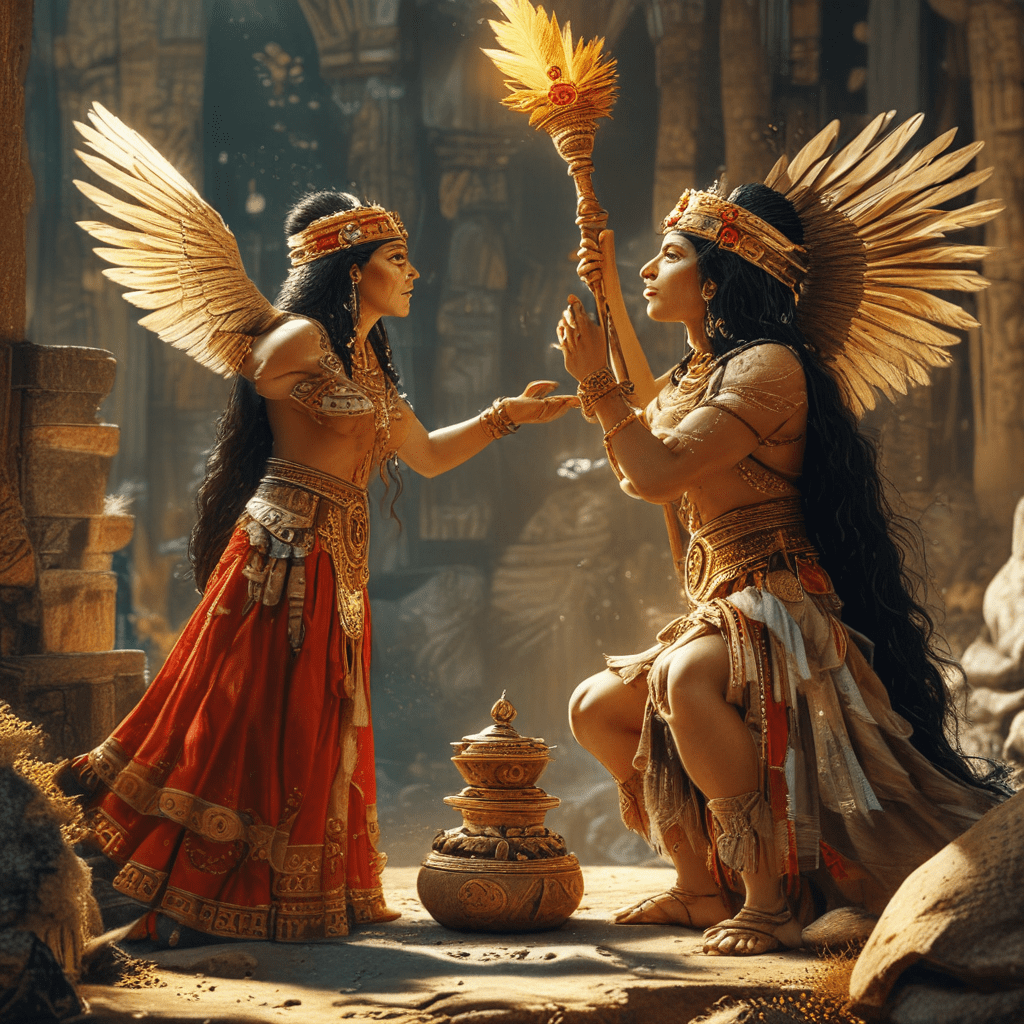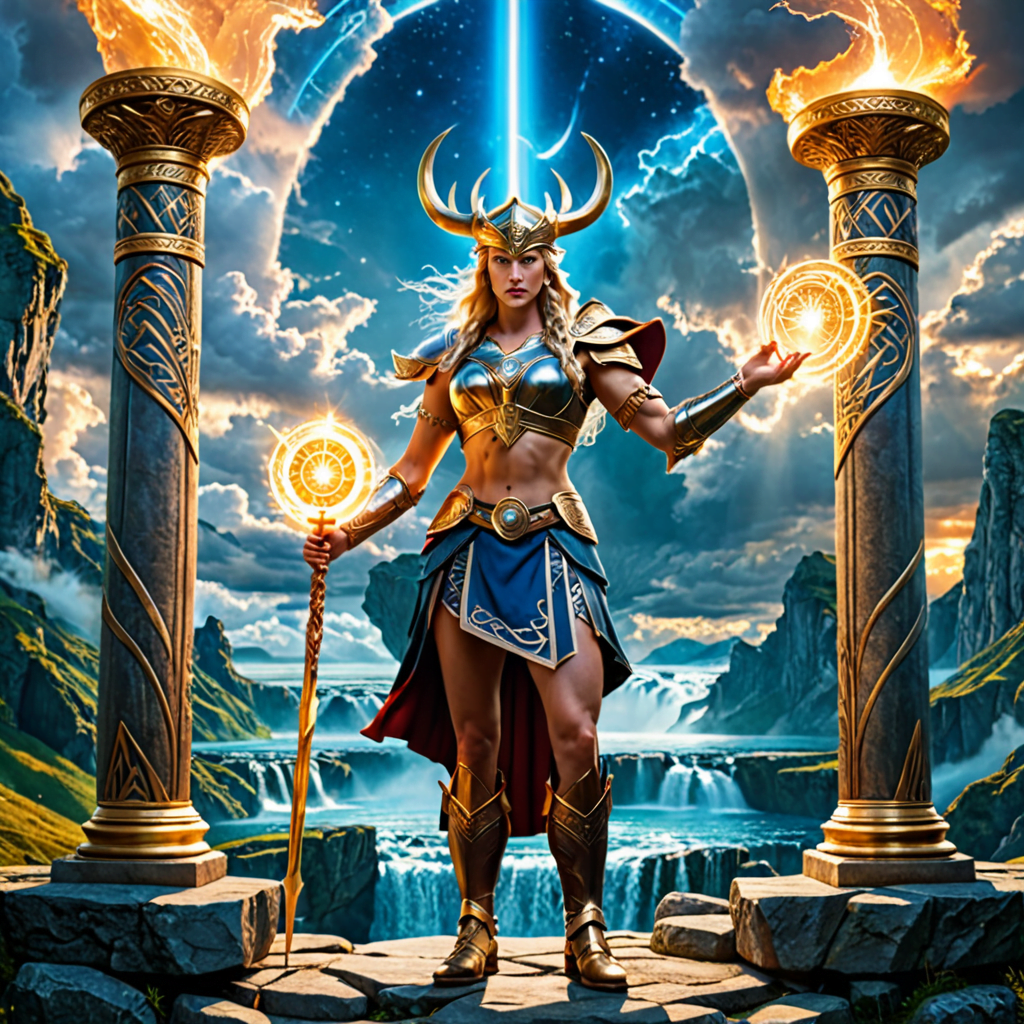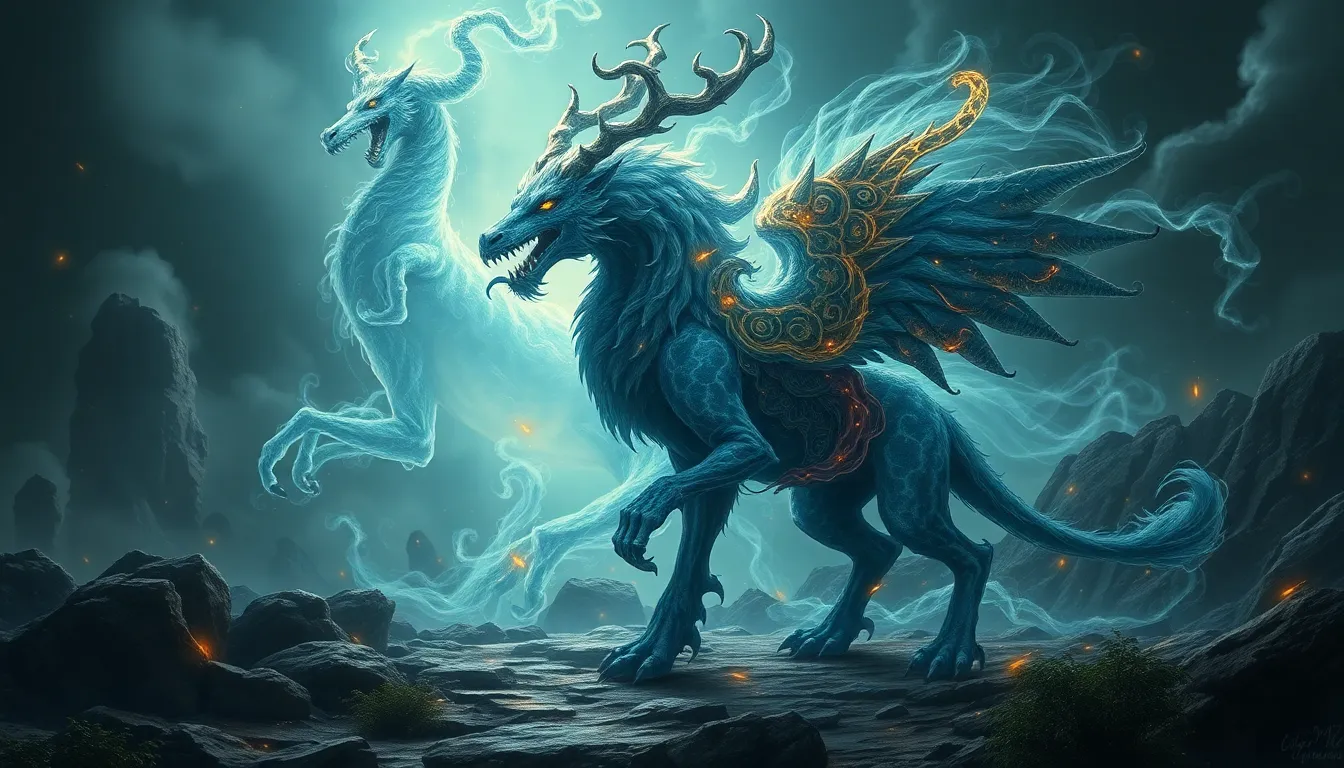The Myth of Inti and Mama Quilla: Love and Balance in Incan Mythology
The Incan Empire, a civilization that flourished in the Andes Mountains of South America, had a rich and complex mythology. At the heart of their beliefs were the celestial deities Inti and Mama Quilla, the Sun God and the Moon Goddess, respectively. These divine figures were not just powerful beings but also embodiments of life-giving forces, cosmic order, and the very fabric of Incan society. The story of Inti and Mama Quilla is a beautifully woven tale of love, balance, and the intricate dance of nature's cycles.
Introduction: The Divine Couple of the Incan Pantheon
Inti and Mama Quilla were more than just deities; they were considered the divine parents of the Incan people. Their love story, passed down through generations, served as a cornerstone of Incan cultural identity, shaping their beliefs, rituals, and even their daily lives. The myth of Inti and Mama Quilla was deeply intertwined with the Incan worldview, offering a framework for understanding the natural world and the place of humanity within it.
Inti: The Sun God and the Source of Life
Inti, the Sun God, was the most revered deity in the Incan pantheon. He was seen as the source of all life, warmth, and energy, responsible for nourishing the earth and sustaining its inhabitants. Inti's golden rays were believed to bring forth the bounty of the harvest, ensuring the survival of the Incan people. His power was vast, and his influence extended far beyond agriculture. His presence was felt in every aspect of Incan life, from the daily routines of farmers to the elaborate ceremonies conducted by priests and rulers. His symbol, the golden disc, was widely used in Incan art, architecture, and religious practices, serving as a constant reminder of his divine presence and life-giving power.
Mama Quilla: The Moon Goddess and the Keeper of Time
Mama Quilla, the Moon Goddess, was the celestial counterpart to Inti. She represented the feminine principle, the nocturnal world, and the cycles of time. Mama Quilla was associated with the moon's phases, the tides, and the rhythms of nature. Her gentle light illuminated the night sky, guiding travelers and offering solace to those who sought her favor. Her influence extended to the realm of fertility, childbirth, and the well-being of women. Her silver disc, a symbol of her power and beauty, was widely revered and incorporated into Incan art and rituals.
The Cosmic Dance of Love and Balance
The myth of Inti and Mama Quilla is not just a story of love; it’s a profound allegory for the delicate balance that governs the universe. Inti, the fiery Sun, and Mama Quilla, the cool Moon, represent the opposing forces of light and darkness, day and night, masculine and feminine. Their love story celebrates the inherent harmony between these contrasting forces, illustrating that balance is essential to the natural order. The Incan believed that the union of Inti and Mama Quilla ensured the stability of the cosmos, influencing the cycles of life and the prosperity of the Incan world.
The Creation Myth and the Role of Inti and Mama Quilla
The Incan creation myth often intertwined with the story of Inti and Mama Quilla, highlighting their crucial role in the origin of the world. According to legend, Inti and Mama Quilla, through their divine union, brought forth the first human beings, marking the beginning of human civilization. They became the spiritual parents of the Incan people, further cementing their importance in Incan mythology and religious beliefs. These stories, passed down through generations, instilled a sense of reverence for nature and the cosmos in the hearts of the Incan people.
The Importance of Harmony and Balance in Incan Society
The myth of Inti and Mama Quilla emphasized the crucial role of balance in Incan society. The Incan believed that the universe was governed by a delicate equilibrium of opposing forces, represented by the Sun and Moon. This concept of duality was woven into every aspect of their lives. Just as the sun and moon complemented each other, the Incan believed that all things in the universe, including human society, were interconnected and interdependent.
The Incan saw harmony as essential for social well-being and prosperity. They believed that maintaining balance between various social groups, such as farmers, artisans, and priests, was vital for the survival and success of their empire. Incan leaders, known as the Sapa Inca, were expected to maintain this balance, ensuring that everyone had their rightful place in society and that the needs of all were met.
This belief in balance extended to their agricultural practices, where they recognized the importance of rotating crops, conserving water resources, and fostering biodiversity. They believed that by respecting and working in harmony with nature, they could secure their own well-being. The Incan worldview, guided by their understanding of the cosmos and the interplay of celestial forces, emphasized the importance of stability and order, not just in the natural world, but also in the social and spiritual realms.
The Relationship Between Inti and Mama Quilla as a Symbol of Order and Stability
The relationship between Inti and Mama Quilla was a powerful metaphor for the order and stability that the Incan valued in their society. The harmonious union of the Sun and Moon was essential for the well-being of the Incan world, just as the balance of opposing forces within society was vital for its stability.
The Incan believed that the celestial dance of Inti and Mama Quilla, the cycle of day and night, reflected the natural order of things. This cyclical pattern was mirrored in the Incan calendar, which was intricately linked to the movement of the sun and moon, guiding their agricultural practices and religious ceremonies. The Incan believed that by respecting and following these natural rhythms, they could ensure the continued prosperity and well-being of their society.
The Incan saw the relationship between Inti and Mama Quilla as a model for their own social interactions. They believed that everyone had a role to play in maintaining the balance and harmony of their society, just as the sun and moon had their unique roles in the celestial realm. This belief fostered a sense of collective responsibility and interconnectedness within Incan society.
The Significance of Solar and Lunar Cycles in Incan Culture
The Incan calendar was intricately linked to the movements of the sun and moon. The Incan observed the solar year, divided into twelve months, each marked by significant agricultural events and religious festivals. These festivals often celebrated the cycles of planting, harvesting, and the abundance of nature, honoring Inti for his life-giving power.
The moon's phases also played a significant role in Incan culture. Mama Quilla was believed to influence the tides, the fertility of women, and the cycles of life and death. The Incan followed the lunar calendar to regulate their religious ceremonies, especially those related to fertility, childbirth, and the worship of the Moon Goddess.
The Incan's reverence for the sun and moon, their celestial deities, went beyond mere observation. They incorporated their cycles into their art, architecture, and religious practices. The Incan temples, built to align with the solar and lunar cycles, were testament to their profound understanding of the cosmos and its influence on their lives.
Theories on the Origins of the Inti and Mama Quilla Myth
The exact origins of the Inti and Mama Quilla myth are shrouded in the mists of time. However, scholars have proposed various theories to explain its emergence and evolution:
Indigenous Andean Beliefs: Some scholars believe that the myth evolved from pre-Incan Andean traditions, where celestial deities were already worshipped. The Incan, as they expanded their empire, incorporated these beliefs into their own mythology, giving rise to the myth of Inti and Mama Quilla.
Astronomy and Observation: Others suggest that the myth arose from the Incan's keen observations of the natural world, particularly the solar and lunar cycles. Their understanding of the influence of the sun and moon on their lives may have led to the creation of these deities as powerful figures governing their destiny.
Cultural Diffusion: It is also possible that the myth was influenced by other cultures that shared a common worldview emphasizing celestial deities and the importance of balance in the universe.
The Lasting Influence of the Inti and Mama Quilla Myth in Contemporary Andean Culture
The Inti and Mama Quilla myth continues to hold a prominent place in the cultural heritage of the Andean people. While the Incan Empire is long gone, their beliefs and traditions have endured, passed down through generations.
Religious Practices: In many Andean communities, Inti and Mama Quilla are still worshipped today. The descendants of the Incan continue to celebrate festivals and rituals honoring these deities, seeking their blessings for abundance, good health, and fertility.
Folklore and Storytelling: The myth of Inti and Mama Quilla has inspired countless stories, poems, and songs, expressing the Andean people's understanding of the cosmos and their place within it. These stories are passed down through generations, ensuring that the myth continues to live on.
Symbolism and Identity: The sun and moon are powerful symbols in Andean culture, representing life, balance, and harmony. The Inti and Mama Quilla myth continues to influence Andean art, music, and literature, serving as a reminder of their rich heritage and the enduring power of their beliefs.
FAQ
Q: What are Inti and Mama Quilla?
A: Inti is the Sun God and Mama Quilla is the Moon Goddess in Incan mythology. They were considered the divine parents of the Incan people and represented the balance of opposing forces in the universe.
Q: How are Inti and Mama Quilla linked to the Incan calendar?
A: The Incan calendar was intricately tied to the movements of the sun and moon. The Incan observed the solar year and the lunar phases, incorporating these cycles into their agricultural practices, religious ceremonies, and daily life.
Q: How did the Incan people view the relationship between Inti and Mama Quilla?
A: The Incan saw the relationship between Inti and Mama Quilla as a metaphor for the harmony and balance that was essential for the well-being of their society. The union of the Sun and Moon represented the balance of opposing forces in nature and the interconnectedness of all things in the universe.
Q: What are some of the lasting influences of the Inti and Mama Quilla myth today?
A: The myth of Inti and Mama Quilla continues to influence the cultural heritage of the Andean people. They are still worshipped in many communities, their story is told in folklore and storytelling traditions, and they remain powerful symbols representing balance, harmony, and Andean identity.



